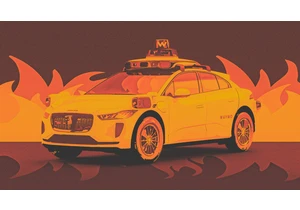A number of large retailers intend to upgrade their pricing systems by swapping out shelf tags from analog ones to digital displays. Doing so means stores can quickly raise or lower the price of an item. It also means consumers once again risk getting pushed aside in favor of (more) corporate profits. Worse yet, while these may seem like simple shelf label changes, they can also become Trojan horses for so much more.
Retailers like Walmart and Kroger claim that the digital upgrades to price tags will improve labor efficiency and lower costs—which means that they’ll now hire fewer people to put prices on items. Also, as prices become digital, there could be a slimmer chance of easily trackable errors in stores. But replacing human tasks with machines isn’t just a loss for the workforce; it’s also a burden on customers, who will then have to accommodate this shift to a far more volatile pricing system. All of us are being asked to adapt to a system that requires a lot of one-way trust that primarily works in the retailer’s favor. If the stores control the algorithms that affect us, and people in stores become more scarce (as with online shopping), it becomes more challenging to get help when the automation fails.
When this pricing technology is in place, many of us may have a sense of unease that prices might change at any moment while we’re cruising the aisles. Although stores are promising they won’t enable surge pricing—which would involve them changing the price of an item depending on demand, time of day, or other need—there is still a possibility that the day we go to the store will be the day dynamic prices change while we’re there in the middle of our excursion. If we pass an item in an aisle to “pick up on the way out,” the price may change between when we saw it, when we retrieve it, and when we get to the register, too.
With this system, there will be no cues for us to foresee price changes. And when there’s no human worker standing in the aisle, it will be that much harder to flag errors or raise questions on products and prices. That responsibility will fall to the consumers—and we’ll have to track prices we see in new ways like photographing them as evidence. This makes the burden of proof on us.
This shift to digital pricing will dynamically speed things up for us in a way we haven’t had to process yet—at least not at such scale. We’re on a threshold of change that could create unease and instability in aggregate as other vendors all adopt this model simultaneously. We’ll be overwhelmed as there are bound to be just as many errors with these digital tags as there are online, which will take time and effort to resolve—especially with fewer people in the stores to help us, and likely none empowered with the computational tools or training required to do so.
When fast-food chain Wendy’s announced last year that it intended to implement dynamic pricing at its outlets, there was a public outcry because there was confusion between dynamic pricing, where prices can be changed remotely and electronically, and surge pricing, where prices change depending upon the time of day and demand. Even after Wendy’s quelled everyone’s anxiety, people still showed a sense of displeasure about the idea of dynamic pricing changes for their (fast) food—even though there are currently more invasive automated changes already happening in other fast-food outlets.
Shelf pricing technology is a tool that can be used for many different purposes other than originally intended. For example, as the digital shelf labels get implemented, it may not be long before retailers start to brainstorm about how to engage us with “smart” shopping carts via the digital shelf pricing algorithms—or a robot that has “intelligence” and wanders the aisles and interacts with customers, like Badger Technologies’ “Marty the Robot” does at over 300 Stop & Shop stores.
Supermarkets are social places where we exchange information with those in our community. The employees within stores are keepers and distributors of that social glue. Replacing these folks with automatic labels and robots destroys that element—and that community knowledge. And if current LLMs are any indicator, whatever data the robots or other human-replacements collect about us will be piped back to corporate headquarters (and certainly won’t be shared with members of the community in real-time, as we do when we are in a conversation with someone at the store).
Taylorism is an efficiency management model that business and engineering schools and technology companies adopted to wring out every bit of perceived “value” in a product or service. It originally started as a way to develop efficiency in manufactured goods production, but over time it’s become the underlying driver for many of the quantitative practices we see today. Some of the Taylorism-trained evangelists have created surge pricing with rideshare companies, and others developed software to enable landlords to raise rental rates collusively via data-sharing software (the latter are now being sued for that practice by the Justice Department). But until now food has been spared such “efficiency”—at least for end consumers in stores. It may happen on the back-end supply chain, but we don’t see that when we shop.
The more stores that do this new store-as-web-browser experience approach, the worse off consumers will be. It could be that stores are hoping to more fully optimize the layer of shopping services like Instacart and others that have tight mini-supply chains. In this case, price automation will clear the aisles, getting the regular people out of the way to create a much more efficient system for those professional shoppers who are already always connected to the network and use the stores as “warehouses” to fulfill their orders.
With digital labels, retailers are providing something that makes their lives easier, and ours potentially much more complicated, labor intensive, frustrating, less social, and perhaps more expensive. People will be the ones forced to make it all work somehow, as providing that integration requires social skills that automation and algorithms lack.
Login to add comment
Other posts in this group

Social media users have been having a field day with Waymo’s autonomou

If you’re not on TikTok, you may not have heard of Aaron Parnas. But for many young people across the U.S., he’s a prominent political news source, with over 3.5 million followers on TikTok and ju

Getting a sense of the scale of social media platforms can be tricky. While tech companies often share self-serving metrics—like monthly active users or how likely users are to buy products after


Fun fact: The saying “work smarter, not harder” is coming up on its 100th birthday. Coined

If you’ve followed Apple for any length of time, you’ve no doubt come across the notion that the company doesn’t rush into adopting cutting-

Every now and then, you run into a tool that truly wows you.
It’s rare—especially nowadays, when everyone and their cousin is coming out with overhyped AI-centric codswallop tha
